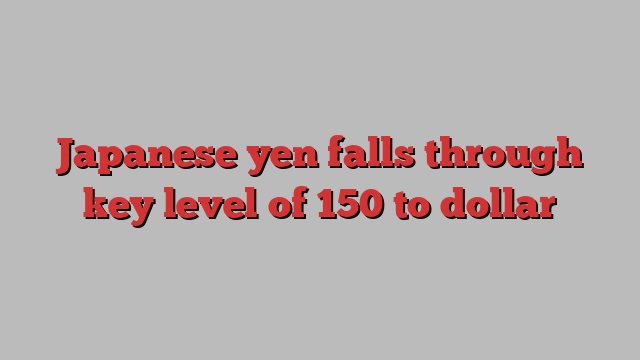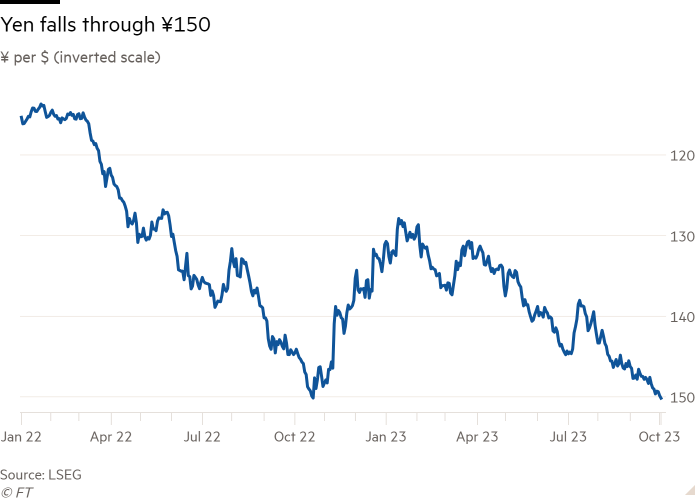
Receive free Yen updates
We’ll send you a myFT Daily Digest email rounding up the latest Yen news every morning.
The yen fell past the closely watched ¥150 to the dollar level for the first time in nearly a year on Tuesday before rebounding sharply, leaving traders confused about whether Japanese authorities were poised to intervene.
Within minutes of crossing the ¥150 line the yen reversed course sharply, lurching to ¥147.37 before settling at around ¥149. The speed and extent of the moves prompted uncertainty as to whether authorities had intervened or would take action to support the yen for the first time since late 2022.
Traders said that Tuesday’s sharp moves were likely to have been caused by the expiry of currency options at the ¥150 level — an event that analysts at JPMorgan in Tokyo had warned earlier in the day could create severe volatility.
Japan’s finance minister Shunichi Suzuki this week appeared to guide markets away from the idea that the precise level of ¥150 would automatically trigger direct intervention, telling reporters that “currency levels will not be the deciding factor in whether to intervene,” and adding that “it is the volatility that matters.”
The yen had been sliding against the dollar throughout the Japanese trading day on Tuesday, with traders testing the force of verbal intervention by the Japanese authorities.

The yen traded as low as ¥150.16 against the dollar on Tuesday, while yields on 10-year government bonds rose to 0.786 per cent before falling back slightly.
But the rebound in the yen on Tuesday was much smaller than previous reactions to government intervention, suggesting that substantial purchases by the Bank of Japan on behalf of the Ministry of Finance were unlikely.
“When they intervened last year in September and October, they intervened three times in quite substantial size. And in those interventions, dollar/yen had very substantial moves. The move we’ve seen today is a fraction of what we’ve seen in the past when there has been an intervention,” said Alan Ruskin, chief international strategist at Deutsche Bank.
The currency has been weakening since January because of a widening interest rate differential between the US and Japan, where interest rates remain at rock bottom levels under the central bank’s ultra-loose monetary policy.
Currency strategists have said in recent days that Japan’s finance ministry will want to avoid intervening if possible, as such a move would be politically sensitive and the rise in US Treasury yields will make supporting the currency increasingly expensive.
“Now it would appear that the fear of intervention is doing a fair amount of heavy lifting for them,” said Jane Foley, head of FX strategy at Rabobank. “As soon as they intervene it’s almost like they have shown their hand.”
The yield on 30-year US Treasuries hit a 16-year peak on Tuesday at 4.89 per cent. The spread — or gap — between 30-year Japanese and US borrowing costs rose to 3.13 percentage points, its highest level since 2003.